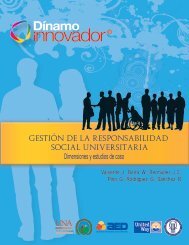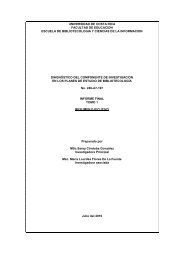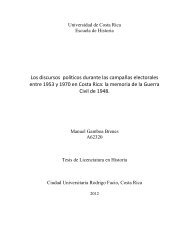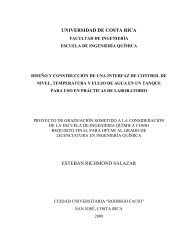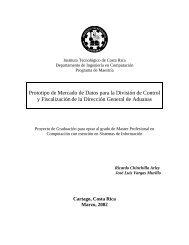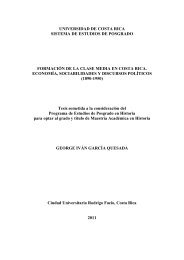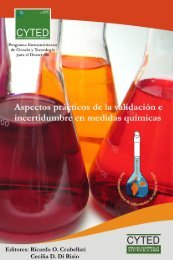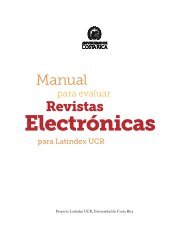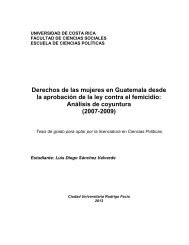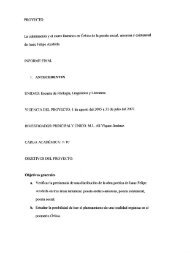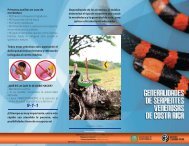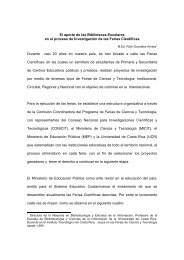A Raisin in the Sun
A Raisin in the Sun
A Raisin in the Sun
You also want an ePaper? Increase the reach of your titles
YUMPU automatically turns print PDFs into web optimized ePapers that Google loves.
Beneatha: Bro<strong>the</strong>r is a flip –let's face it.<br />
Mama: (To Ruth, helplessly) What's a flip?<br />
Ruth: (Glad to add k<strong>in</strong>dl<strong>in</strong>g) She's say<strong>in</strong>g he's crazy.<br />
Beneatha: Not crazy. Bro<strong>the</strong>r isn't really crazy yet –he –he's an elaborate neurotic (Hansberry, 1988: 49).<br />
Lena is <strong>the</strong> woman who has <strong>the</strong> lowest education level <strong>in</strong> <strong>the</strong> family. Indeed, she is <strong>the</strong> closest to <strong>the</strong><br />
slavery period <strong>in</strong> US history: “Son –I come from five generations of people who was slaves and<br />
sharecroppers” (Hansberry 1988: 143). Still, she is proud of her roots: “a<strong>in</strong>'t nobody <strong>in</strong> my family never<br />
let nobody pay 'em no money that was a way of tell<strong>in</strong>g us we wasn't fit to walk <strong>the</strong> earth. We a<strong>in</strong>'t never<br />
been that poor. [. . .] We a<strong>in</strong>'t never been that –dead <strong>in</strong>side” (Hansberry 1988: 143). Lena's words reveal<br />
her <strong>in</strong>ner strength and pride.<br />
As it can be seen, <strong>the</strong> women <strong>in</strong> <strong>the</strong> Younger family share <strong>the</strong>ir unprivileged social class, belong to a<br />
m<strong>in</strong>ority group (<strong>the</strong>y are African-American), and by def<strong>in</strong>ition are oppressed by patriarchy. Aga<strong>in</strong>, from a<br />
traditional perspective of b<strong>in</strong>ary oppositions, if <strong>the</strong>y are oppressed, <strong>the</strong>y belong to <strong>the</strong> marg<strong>in</strong> and thus are<br />
ei<strong>the</strong>r powerless or share a very limited quota of power. Still, a Derridean analysis of <strong>the</strong>ir relationship<br />
reveals that <strong>the</strong>y possess a power structure which is not equal for each of <strong>the</strong>m and that challenges <strong>the</strong> idea<br />
of gender as <strong>the</strong> factor def<strong>in</strong><strong>in</strong>g power or powerlessness.<br />
POWER STRUCTURES OF THE YOUNGER WOMEN<br />
In terms of power, one could expect Beneatha, <strong>the</strong> educated, liberated woman, to be above <strong>the</strong><br />
o<strong>the</strong>r two women because <strong>the</strong>y are still bl<strong>in</strong>ded by <strong>the</strong> patriarchal system. Lena and Ruth would <strong>the</strong>refore<br />
share <strong>the</strong> same level of power. Ano<strong>the</strong>r position could ma<strong>in</strong>ta<strong>in</strong> that due to age and experience, Lena<br />
would be above <strong>the</strong> two young women, which is true to some extent s<strong>in</strong>ce Lena <strong>in</strong>deed is <strong>the</strong> one <strong>in</strong> charge<br />
of <strong>the</strong> decision mak<strong>in</strong>g <strong>in</strong> <strong>the</strong> Younger family. This would place both Beneatha and Ruth at <strong>the</strong> same level<br />
below Lena. These two possible power structures are summarized <strong>in</strong> <strong>the</strong> figure below:<br />
Saravia Vargas, José Roberto. "From Power-over to Power-to: Power Relations of Women <strong>in</strong> Hansberry's A <strong>Rais<strong>in</strong></strong> <strong>in</strong> <strong>the</strong> <strong>Sun</strong>"<br />
Impossibilia Nº4, Págs. 34-51 (Octubre 2012) Artículo: Recibido 08/02/2012 - Aceptado 20/03/2012 - Publicado 30/10/2012<br />
41




